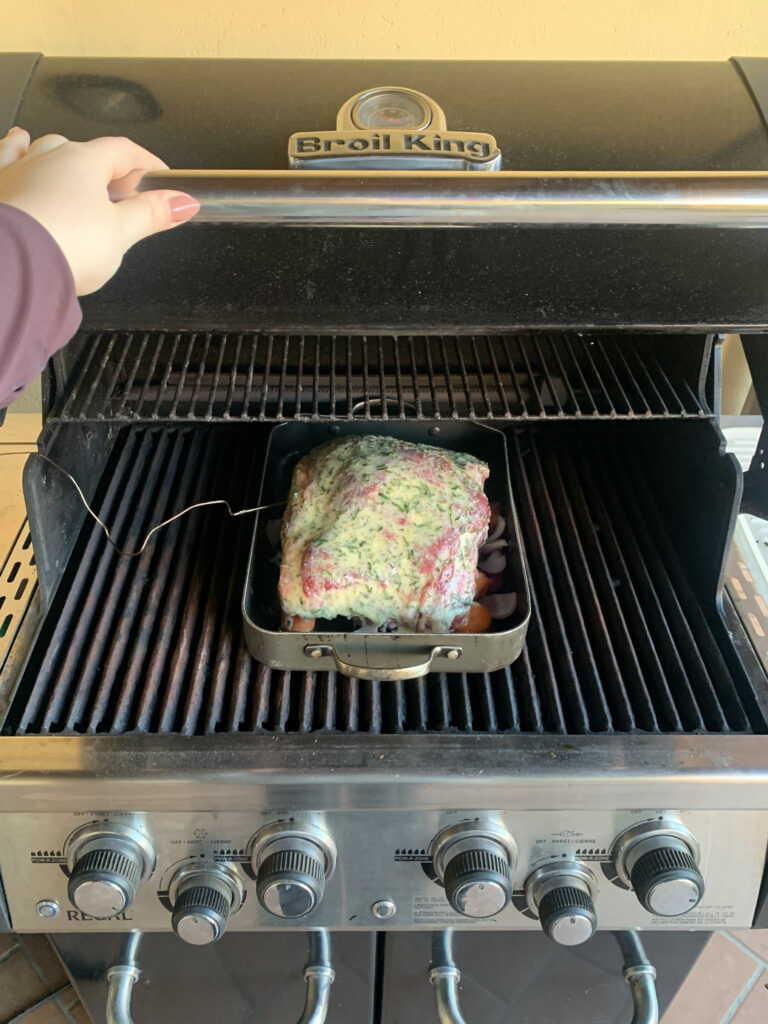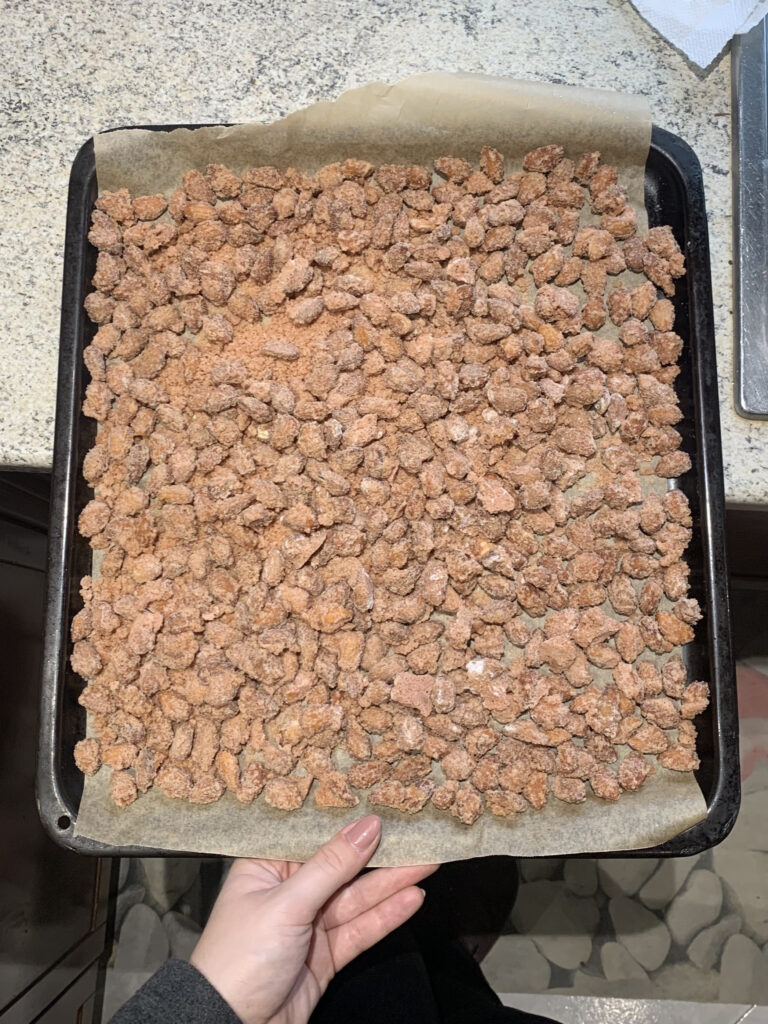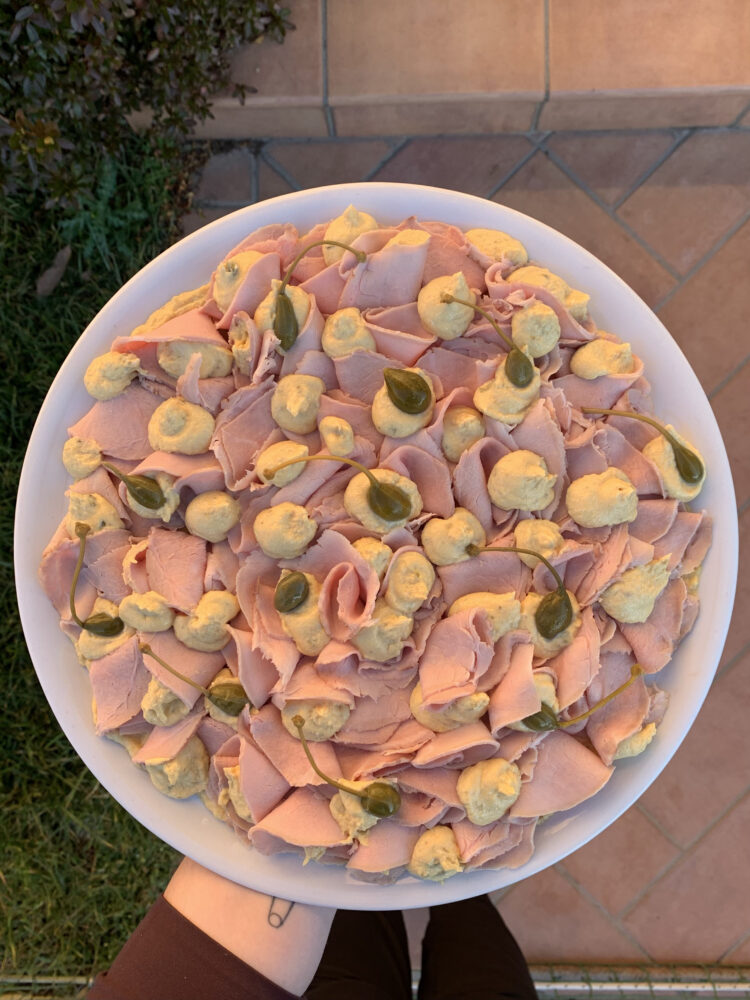Hello people and hello 2025! And merry Christmas, even if it’s a little late. I hope you all had a fun time this holiday season and that the new year was off to a good start.
This Christmas I went all out, so I wanted to open the doors of my kitchen to you and show you what an Italian Christmas lunch looks you. Disclaimer: my family is definitely not the most traditional Italian family out there, but I think it will be interesting for you to see what a less stereotypical family does.
I was in charge of 70% of the lunch this year and I had a lot of fun! It was my first time trying sous-vide cooking and making prime rib (I know, big risk), but overall I’m quite proud of everything.
HOW DID I PREP FOR CHRISTMAS?
I prepped everything over the course of 4 days, to avoid stressing on Christmas day. How you organize your work will depend on how many courses or preparations you have to make. Rule of thumb: do the bare minimum on the day you have to serve lunch or dinner, so you’ll be able to enjoy it more.
What can you make early? Ask yourself these questions:
- How does time affect the different preparations? Some baked goods go stale if you make them 3/4 days in advance, others keep for longer. Uncooked sauces or preparations with raw eggs or other ingredients that go bad more quickly can only be made a day. Certain fruit or vegetables tend to turn brown if you prepare them too early.
- What about temperature and cooking time? Take note of all the different temperatures and cooking times to make sure that you get there on time and avoid over cooking. Start with things that take longer, like a prime rib roast or a bread that has to rise. While you wait, you can do quicker preparations.
- How does it reheat? Sauces, broth, soup or stews can be reheated easily and are often even better later! But sometimes reheating changes the texture or the taste. I wouldn’t reheat pasta for example, you can just boil water and cook it al dente on the day. However, you can make ahead something like lasagna and keep it in the fridge until you have to bake it.
- Can you freeze something? You can freeze things like cake layers, soup or broth. If you have a lot of meat courses, you can cook all the different cuts of meat and freeze them. This works especially well with sous-vide as it’s more controlled and vacuum sealed. You can then defrost and regenerate at a lower temperature.
These questions will help you create a schedule and a calendar! I decided to show you my delirious one, with water smudges and scribbles. Ignore the fact that it’s half in Italian and half in English, it represents the confusion in my brain (lol).

MY CHRISTMAS MENU: STARTERS
I’ll tell the story of my lunch as if you were eating it with us. First, starters! Some are probably common to all Italian families, like insalata russa (lit. Russian salad). The only similar dish I can think of is potato salad, with the addition of pickled vegetables (giardiniera) and sometimes boiled eggs. Other starters are specific to certain cities or regions of Italy.

First of all, you can never go wrong with a cheese and charcuterie board. I had just come back from Trentino, in the north east of Italy, so I added some of the products I got there. I started forming our board with salame, parmesan and soppressa a softer garlicky salame from Veneto, my mom’s region in the north east.
Then I added the more ‘special’ products: a cheese aged in hay, truffle pecorino and mortandela. To not be confused with mortadella or bologna (called boloney in some places, even if ours is different). Mortandela is a softer and smoked salame, it’s almost similar to speck if you’ve ever had that.
Another starter that’s famous in many countries are deviled eggs or uova ripiene (lit. stuffed eggs). I love these! I don’t think there’s a huge difference in ingredients: egg yolks, tuna, anchovies, mayo and capers.

But the star of my starters was definitely my beautiful vitello tonnato. This dish is from my region, Piemonte, in the north-west of Italy. You can also eat it on its own, but it’s considered mainly a starter. It consists of thinly-sliced veal, dressed with a tuna sauce. I know, it sounds weird, but trust me. The sauce is made with mayo, tuna, capers, anchovies and occasionally egg yolks. It’s very similar to the filling for my deviled eggs and you can also buy it pre-made in the store.
As for the veal, my mom usually boils it in water with celery, carrots and onions a makes a light broth out of it. This year I wanted to try the fancy version, so I cooked it sous-vide (62°C/ 144°F for 1h30m and up to 4 hours). Then I let it cool in the fridge overnight and sliced it very thinly with a deli slicer. I folded the slices almost like flowers and I used a piping bag for the sauce, adding some caper berries on top. Beautiful!

FIRST COURSE: AGNOLOTTI CON RAGU’ BIANCO
I won’t take credit for this since my sister-in-law’s mom brought them to the lunch. However, they deserve a special mention. Agnolotti are a kind of stuffed pasta (like ravioli) from my region, Piemonte. The filling is meat, sometimes leftover from a roast. It’s also quite common to find them dressed in sugo d’arrosto, the gravy/juices also leftover from a roast. It’s really a zero-waste dish!
On Christmas day we ate them with ragù bianco or white ragù, made without tomato sauce and with lots of fresh herbs, like bay leaf and rosemary.

Other common first courses are lasagna, cannelloni or tortellini. You could also try making my pasta e fagioli, why not!
SECOND COURSE: PRIME RIB ROAST
This was my first time making prime rib. I know, big risk! I used Joshua Weissman’s recipe with the reverse-sear method. I covered it in herb garlic butter, cooked it for hours in the oven/bbq and seared it at the end. I then served with a horseradish sour cream sauce and an au-jus (kinda like beef gravy). I’m not too disappointed with how it came out, but it wasn’t my favourite.
Definitely not Joshua’s fault though. I just wasn’t a fan of this cut of meat! We don’t have this cut in Italy, so I had to explain it to the butcher and he sort of created it for me. This is what I usually do with other ‘foreign’ cuts, like pork butt. I’m not sure if it was the meat quality, but it wasn’t very tender and the fat didn’t melt nicely. Maybe I should’ve cooked it differently, but my family liked it. Still pretty good considering it was my first time!


AND FINALLY, DESSERTS.
Yes, it’s not over yet. Almost there!
We tried to go ‘light’ on the desserts since we went all out on everything else. Mind you, dessert was served like an hour after we ate the prime rib. Since it was also 5 pm at that point, it was basically afternoon tea.
The stars of Christmas desserts are pandoro and panettone. Sometimes I see them called ‘cakes’ in English but that’s really not it. Both are sweet yeasted breads, but fluffy and light. Pandoro is usually plained and served with powdered sugar, so it’s a crowd-pleaser. Panettone has a richer dough and traditionally has candied orange and raisins, so it’s usually a more ‘adult’ taste. You can buy both at the store, but for Christmas we usually get a few artisanal panettoni from a pastry shop. In Italy there’s always a big debate on which one is better: are you team pandoro or team panettone?
I also made some crema al mascarpone or mascarpone cream, which is essentially the same one you use in tiramisù. It usually goes with pandoro, but I decided to have it anyway with panettone or even on its own because it’s that good!
Since they’re very popular in my family, I made some candied almonds to snack on as a dessert or throughout the afternoon. They’re easy to make and very nostalgic, because it’s what we eat at amusement parks or town fairs when we’re children.

There are many regional desserts as well. In Piemonte you can find tronchetto di Natale, also known as Bûche de Noël in France or Yule Log in English-speaking countries, or bonet, a chocolate and amaretto pudding. In Naples you find struffoli, in Calabria petrali and in Molisa mostaccioli. Every family is different as well, mine is not super traditional. However, every table will have some torrone on it, nougat that can be soft or hard, with almonds, hazelnuts or pistachios.
And to make everything go down nicely, an espresso and some amaro or digestive liqueur!
AND WE’RE FINALLY DONE!! This was my family’s Christmas lunch, even if it lasted from 1 to 6 pm. If you managed to read everything, I hope you found it interesting and learnt something new. Thank you for coming along!
























